This is from a series of posts by MABA resident artist Barry Van Dusen
Wildwood Camp, Rindge, NH on April 14, 2016
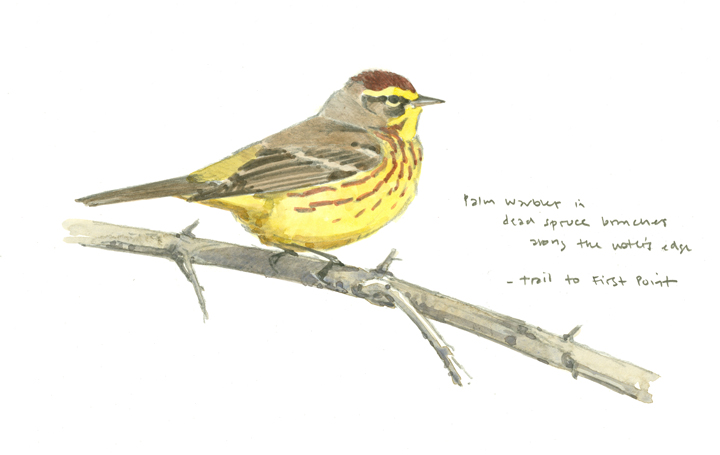
Palm Warbler sketchbook study, pencil and watercolor, 6″ x 9″
Wildwood is a quiet, peaceful place in April. The small, year-round staff is busy preparing for the arrival of campers in June, and things are looking ship-shape. The floating docks are installed on the waterfront and in the empty cabins, the floors are swept clean and sleeping pads are turned up against the walls. Almost 700 campers are already enrolled for the 2016 season – Wildwood will be a busy place this summer!
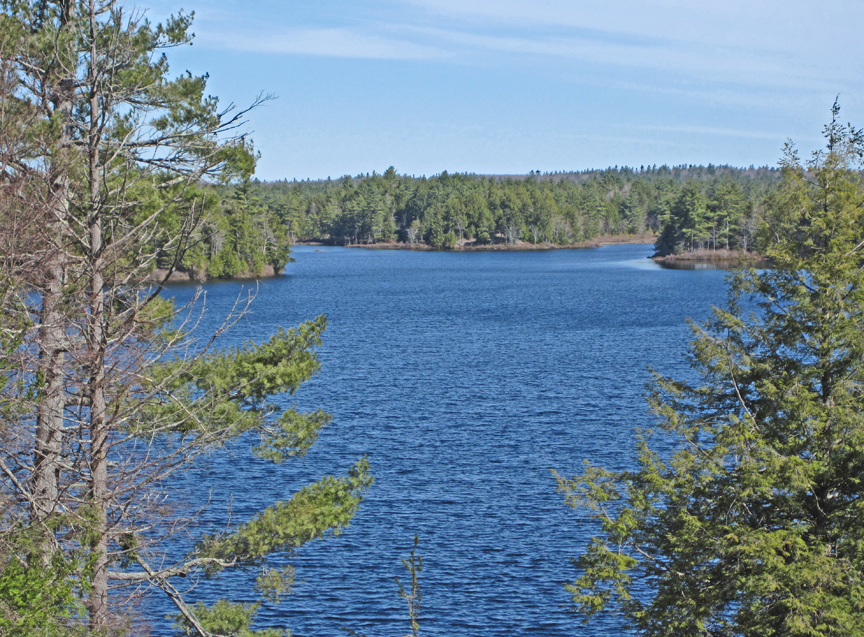
The first thing I do is head for the waterfront and beach on Hubbard Pond. The Wildwood camp is the only development on the entire pond. Mass Audubon owns 159 acres and a good stretch of waterfront, but the remaining shores are all state owned parkland. Needless to say, the view from the beach is scenic and unspoiled!
I watch an osprey make lazy circles over the pond before visiting the Nature Center cabin behind the Dining Hall. Inside are intriguing objects like bird nests and mammal skulls!

I make a drawing of an attractive little plant growing at the edge of the brook just east of the parking area. I’m puzzled by its identity, so once again enlist Joe Choiniere for help. He quickly identifies it as Golden Ragwort (Senecio aureus) and explains that some plants can be tricky to identify early in the year before they have put on their full growth. Later in the year, this plant may be up to 30” high with showy yellow flowers on tall stalks!
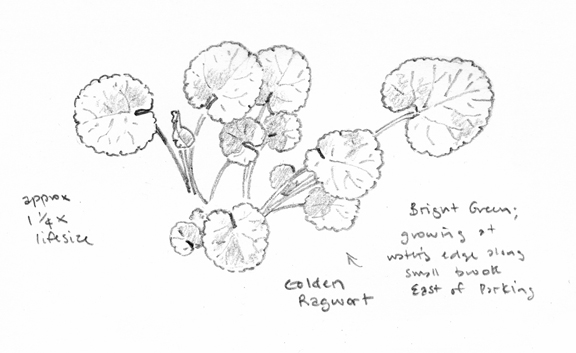
sketchbook study, pencil, 3″ x 5″
Along the main entrance road I spy a tiny speck of powder blue flitting along the gravel roadside. It’s a Spring Azure, my first of the season! Azures are tiny butterflies (each wing about ½”long), and to draw or paint such a tiny creature with “naked eye” is more than my aging eyes can manage. After chasing this azure up and down the roadside, it finally settles down and I approach cautiously on my knees, then my belly, to get some shots with my digital camera. Digital cameras are excellent magnifying tools, granting me the opportunity to study the intricate detail of this tiny butterfly.
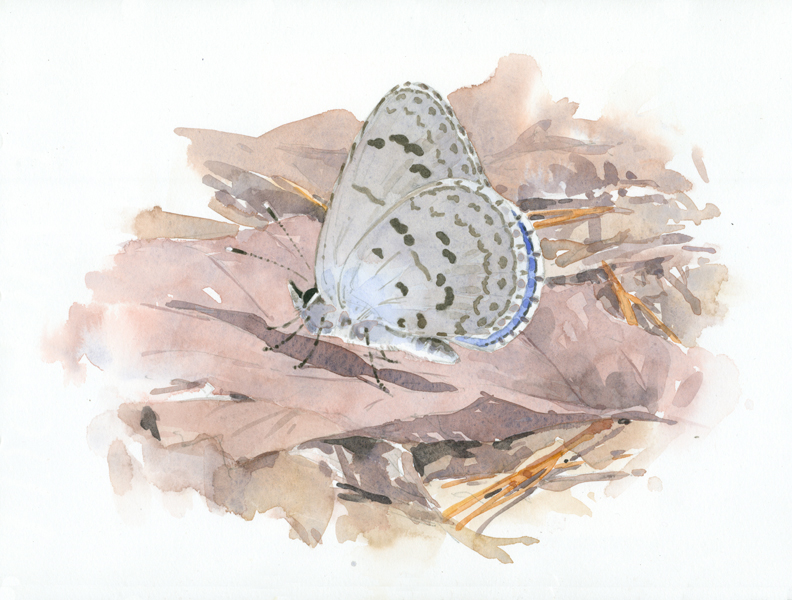
Spring Azure, watercolor on Arches hot-press, 8″ x 11″
The Azure group of butterflies continues to puzzle taxonomists, and most agree that what we call Spring Azure is actually a complex of three or more species. The true “Spring Azure” that emerges in early spring has three distinct forms, and the one I’m watching is the palest and most lightly marked form “violacea”. Spring Azures have an endearing habit of rubbing their hind wings together, alternately up and down. In my painting, this action reveals just a glimpse of that azure blue upper surface of the wing, for which the species is named.
On the trail to First Point, I follow a palm warbler along the edge of the water. It flits just ahead of me all down the shore, then gives up the game and flies up to perch on a hemlock bough. I get my scope on it right away, and can’t believe my luck when it continues to sit quietly for almost ten minutes while I sketch and take pictures. It’s not often you get this much “scope time” on a wood warbler!
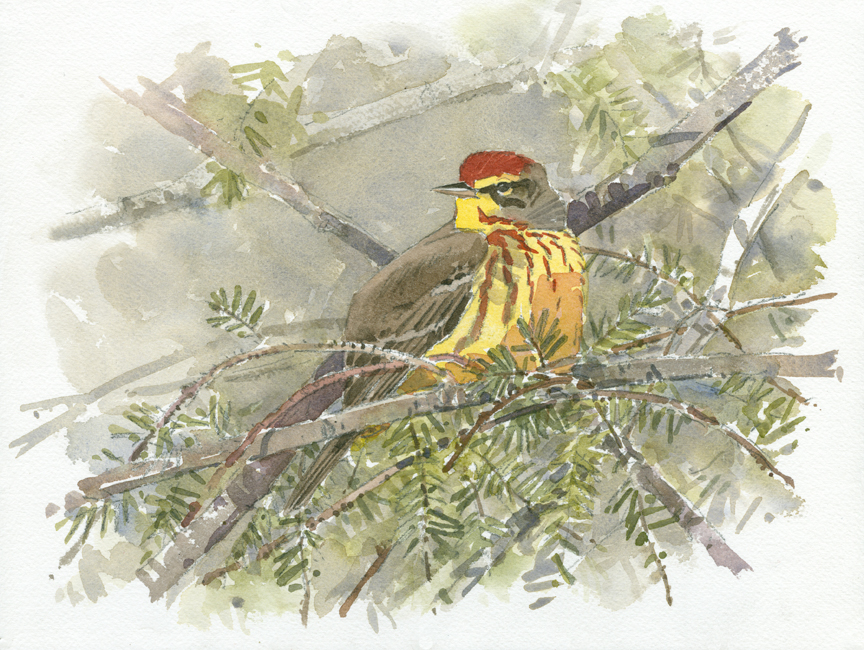
Palm Warbler in Hemlock, watercolor on Arches cold-press, 9″ x 12″
While eating lunch out on First Point, I gaze up at a big red spruce heavy with cones against a deep blue sky. Red Spruce is not a common tree in central and eastern Massachusetts, and this tree carries with it a strong flavor of the Northwoods. Picking out a section of boughs with my scope, I decide to do a quick and rather crude study that nonetheless captures the impression of the moment.
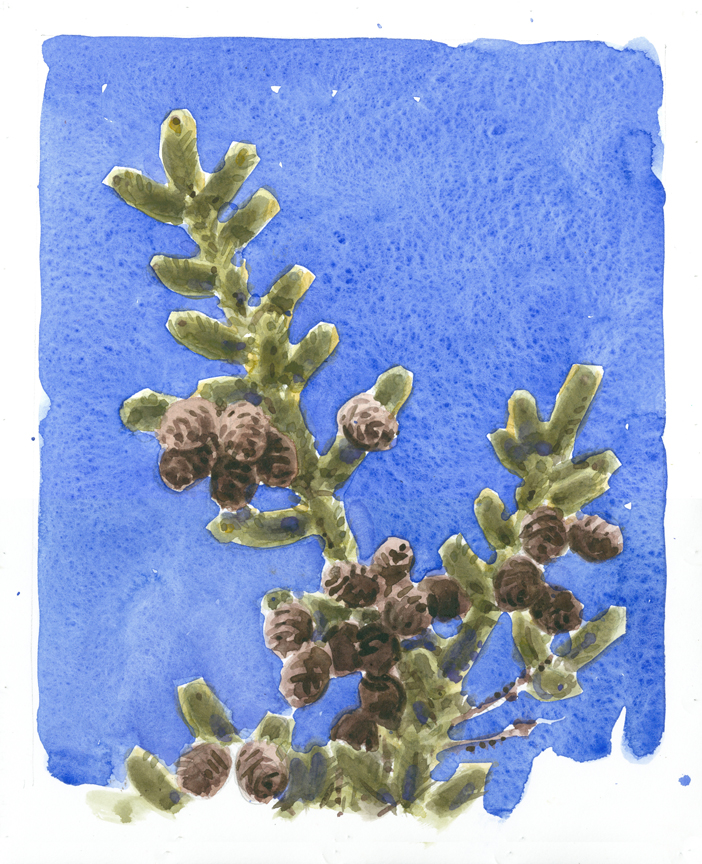
Spruce Branches and Cones, watercolor on Arches hot-press, 11″ x 9″

